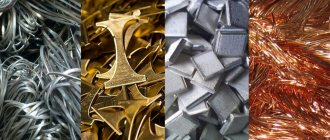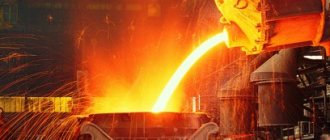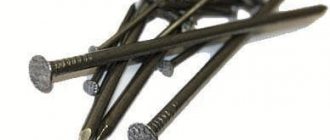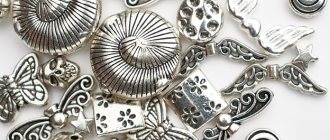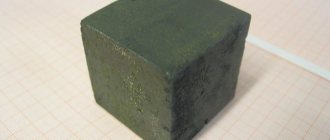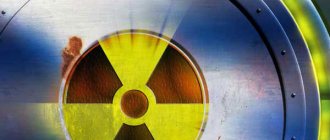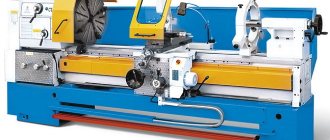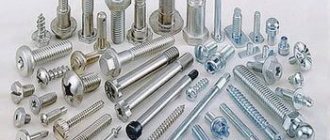Black steel, otherwise known as carbon steel, comes in the form of sheets or coils and is produced by forming. Sheets are subjected to the following types of processing: rolling (hot or cold), drawing (hot or cold), forging and pressing. These processes give the sheet the required shape and subsequently they are used to make channels, angles, hollow profiles, pipes, sheets and much more. Hot-rolled, cold-rolled and galvanized steel in sheets and coils can be ordered from our website.
Metals in the Periodic Table
In the Periodic Table of Chemical Elements, metals occupy a leading position. Of the 117 elements known today, more than 90 belong to metals. All these elements have a number of characteristic features that allow them to be classified as metals:
- Capable of conducting electric current.
- They have thermal conductivity.
- Malleable, ductile, amenable to rolling into sheets and wire (not all).
- They have a silvery sheen (except for copper and gold).
In addition to general properties, each such element also has a number of specific ones, which makes it so popular.
Typology
All metals as simple substances can also be divided into three classes:
- Black.
- Colored.
- Precious.
Non-ferrous metals include everything except precious metals and iron. That is, it is copper, mercury, palladium, chromium, nickel, zinc, magnesium, calcium, aluminum, lead, tin and so on.
Precious metals include the following:
- silver;
- gold;
- platinum
What is ferrous metal
The category of “ferrous metals” includes iron and all its alloys that currently exist. In its pure form, iron is found only in research laboratories. Mainly it was steel.
This type of metal is formed by combining iron with carbon and adding additional elements that give the resulting metal certain properties necessary in a particular production (for example, magnetic).
Cast iron and steel
As a rule, ferrous metals undergo several standard phases in production: the extraction of ore and its processing in a blast furnace. After this, cast iron is obtained, from which any types of steel and iron alloys are subsequently obtained. The latter are more often used in heavy industry. In contrast, non-ferrous metals are a softer substance with slightly different properties; they are used in a different area.
The composition of cast iron includes 93% iron and about 3-5% carbon, plus residual elements in small quantities. This material is rarely used for production because it is brittle. It can be found in the manufacture of certain types of pipes, valves or valves. But the majority of the pig iron produced (more than 90%) is processed into steel.
The main types of steel that are made from iron are: carbon and low-carbon (hardened) steel, stainless steel, ferrite-chromium, chrome, martensitic-chromium, chrome-vanadium, alloy, nickel, tungsten, molybdenum and manganese steel.
Iron ores
In its pure form, this element of the periodic table is found in fairly small quantities in the earth's crust (only 5.5%). But there is a lot of it in various iron ores.
The most significant deposits (reserves amount to more than 30 trillion tons) are layers of ferruginous quartzites, which are more than two billion years old. They are distributed mainly in places such as South and North America, Africa, India and western Australia.
Refractory metals
This subgroup includes niobium, molybdenum, tungsten and rhenium. Their common feature is that the melting point of ox is higher than that of iron - that is, it is more than 1539 degrees Celsius. As a rule, they are used to make parts for equipment and filaments for various light bulbs.
The filaments in light bulbs are usually made of tungsten
Uranium metals
This group includes uranium, californium and other radioactive metals. They are used exclusively in the nuclear energy industry.
In ancient times, uranium was used to make yellow ware
Rare earth metals
This classification includes laptan, praseodymium, neodymium and other metals. They are all silvery-white in color and have almost exactly the same chemical properties. Rare earth materials get their name because they are difficult to find in the earth's crust. They are used in nuclear energy and mechanical engineering. For example, from rare earth metals it is possible to create glasses that do not transmit ultraviolet rays.
The rare earth element scandium is used in mercury gas lamps
What do we know about stainless steel?
Corrosion-resistant steel or stainless steel is an alloy consisting of iron and carbon, additionally enriched with special elements that give it high resistance to negative environmental factors. The main one of these elements is chromium. Stainless steel contains at least 10.5% of it. Chromium, in addition to anti-corrosion properties, gives such alloys a number of positive characteristics:
- good processability by cold forming;
- exceptional strength;
- ability to obtain reliable connections by welding;
- possibility of long-term operation without loss of its characteristics;
- attractive appearance.
Chromium, contained in stainless steel in sufficiently large quantities, promotes the formation of a surface oxide film. It is this that protects the metal from corrosion.
Stainless steel sheet
Various grades (types) of stainless steel, and more than 250 of them have been created to date, contain in their chemical composition both chromium and a number of other alloying additives, the most common of which are nickel, titanium, molybdenum, niobium and cobalt. Naturally, steels with different proportions of alloying elements in their composition have different characteristics and areas of application.
As with any other type of alloy, carbon is an essential element in stainless steel. It is this element that gives the resulting metal alloy hardness and strength.
Today, it is impossible to imagine almost any industry without the use of stainless steel. Grades of this alloy, all of which are distinguished by the ability to successfully operate even in the most aggressive environments, are used for the production of cutlery and medical instruments, containers for food liquids and products, pipes for transporting aggressive media, household appliances, and much more.
Stainless steel rods
The main differences between steel and cast iron
- Cast iron is magnetic in any case, and steel is magnetic depending on what impurities are included in the composition.
- Items made from a high-carbon alloy weigh more, despite the high density of steel up to 7900 kg/cub.m.
- Cast iron objects are voluminous.
- Steel is processed easily, products made from it are stamped, but cast iron is difficult. It is suitable for preparing cast items.
- Cast iron objects, unlike steel products, do not withstand impacts.
- Cast iron objects heat up slowly, although evenly, and cool down within 10 minutes.
- There is no need to harden cast iron.
Drilling and grinding are great ways to find out the type of alloy. It is enough to drill a small hole, if the result is thin shavings formed into a long loach that bends well, then the workpiece is made of steel.
Cast iron is not ductile; when drilling objects from it, vines practically do not form. The shavings can be easily turned into powder. When grinding cast iron alloys, the spark is short and red in color. When steel is processed, the sparks are yellow, almost white, and oblong in shape.
Characteristics of the ferrous metallurgy industry
The most important types of ferrous metallurgy products are hot-rolled and cold-rolled steel, steel pipes and metal products.
In terms of production volume of the main types of ferrous metallurgy products (steel, cast iron, iron ore, steel pipes, etc.), our country ranked first in the world. The country had all the necessary resources to develop the industry.
The raw materials used were iron ores, coking coal, refractory materials, metal and non-metallic raw materials for ferroalloys.
The raw material base of ferrous metallurgy included many components (about seven tons of raw materials were consumed per ton of steel).
The production of ferrous metallurgy itself includes the extraction and primary processing of raw materials (concentration), metallurgical limits, and waste disposal. There are three types of metallurgical production:
1. Full cycle production, including all stages of the metallurgical process, i.e. In addition to the preparation of raw materials for smelting, there is iron production (blast furnace), steel production and rolling production.
2. Partial cycle production, represented by steel smelting or cast iron smelting, or rolled products (for example, pipe rolling, rail rolling, etc.).
3. Production of ferroalloys, i.e. cast iron alloys with alloying metals (manganese, chromium, nickel, etc.).
The metallurgical complex plays a major role in the development of the national economy. Ferrous metallurgy is one of the basic branches of heavy industry and is characterized by high material and capital intensity of production.
Ferrous and non-ferrous metallurgy accounts for almost 90% of the total volume of structural materials used in industry.
Metallurgical cargo makes up about 35% of railway freight turnover and the industry consumes 25% of the fuel and energy resources consumed by Russian industry.
Modern large metallurgical enterprises are plants in which, in addition to the production of not only cast iron, steel, and rolled products, there are coke plants, sinter factories, chemical plants producing benzene, ammonia and other chemical products; production of mineral fertilizers, resins, medicines, as well as a variety of building materials - cement, block products, wall panels.
In a market economy, large ferrous metallurgy plants created workshops for the production of household appliances. Large iron and steel plants have their own powerful energy base and water supply.[2]
What is carbon steel?
Carbon steel is a type of steel that contains carbon as its main component. The carbon content is about 2.1% by weight. When the percentage of carbon increases, the hardness of the steel increases. Then it becomes less plastic.
There are three main types of carbon steel as follows:
Low carbon steel
Low carbon or mild steel contains a smaller amount of carbon, typically around 0.04-0.30% by weight. This form of steel is useful for many applications. Other components, such as aluminum, are added to improve the properties of steel.
Medium carbon steel
Medium carbon steel contains more carbon than low carbon steel; usually about 0.31-0.60% by weight. It also contains significant amounts of manganese. This form is stronger and harder than mild steel. Therefore, cutting and welding this steel is difficult.
High carbon steel
High carbon steel has a very high carbon content of around 0.61–1.50% by weight. Some call it "carbon tool steel." This is due to its high strength and hardness, which makes it difficult to cut and weld.
Status and forecast for the development of the ferrous metallurgy market based on the results of January. 2010
The post-crisis recovery continues in the global metallurgical industry, a feature of which is the pronounced cyclical nature of changes in prices and demand. At the same time, a number of price and production indicators have already reached 2008 levels, but the seasonal decline, combined with the imbalance of supply and demand, increases the instability of the world and regional markets.
State of the world market
IRON
Ore has more than doubled in price from last year's lows, and current spot prices are 80 percent higher than contract prices for Japanese consumers set for 2009-2010.
Against this background, the three leading exporters of iron ore raw materials (IROR) consider it fair to have at least a 40 percent increase in the cost of supplies under contracts in 2010–2011.
Officially, China and other main consumers of iron ore in Southeast Asia are not ready for such a rise in prices, but some companies agree to accept the conditions of exporters, expecting an even greater increase in the price of raw materials.
World production of DRI (direct reduced iron) in 2009 decreased by 5.65 percent to 53.562 million tons, in December there was an increase of 28.9 percent to 4.902 million tons. The leaders at the end of the year were India /21.035 million tons/, Iran/ 8.203 million tons/, Venezuela /5.508 million tons/, Saudi Arabia /4.623 million tons/ and Mexico /4.203 million tons/. The largest reduction in output volumes was observed in Brazil, Argentina and Canada.
In the US, Steel Dynamics has produced the first batch of DRI, granular iron (“nuggets”), at its Mesabi plant in Minnesota, which will be used as a raw material in its steel plants. The production uses ITmk3 technology developed by Kobe Steel.
Brazil provided 36 percent of world ore exports in 2009. In December, shipments increased by 11.7 percent, the bulk of which came from China, Japan and Germany. Shareholders approved the consolidation of two iron ore subsidiaries of Vale - Mineracao Estrela de Apolo in Minas Gerais and Mineracao Vale Corumba in Mato Grosso do Sul.
In Liberia, a detachment from the Chinese Henan province, as part of a joint exploration project with Beijing China-Union Investment, discovered an ore deposit with probable reserves of 4 billion tons.
In Ukraine in 2009, iron ore production decreased by 8.3 percent to 65.827 million tons, while the output of concentrate decreased by 3.4 percent, to 54.853 million tons, ore - by 8.3 percent to 65.827 million tons, prepared iron ore - by 12.9 percent to 55.28 million tons. Ore exports increased by 27.1 percent to 28.576 million tons.
In Kazakhstan in 2009, ore production increased by 4.2 percent to 22.298 million tons, pellets decreased by 11.1 percent to 6.182 million tons. ENRC in the 4th quarter of 2009 increased pellet production by 104 percent to 2.3 million T.
In the first 9 months of the financial year (from March 21, 2009), Iran increased its exports of ore and concentrates by 63 percent to 6.32 million tons, with 5.8 million tons shipped to China.
In 2009, China increased ore imports by 41.6 percent to 627.78 million tons, in December - by 22 percent to 62.2 million tons. Import supplies account for 70 percent of total iron ore consumption. Ore reserves in Chinese ports increased to 67.42 million tons, incl.
Australian raw materials - 22.23 million tons /33 percent of total reserves/, Brazilian - 18.55 million tons /27.5 percent/, Indian - 14.35 million tons /21.3 percent/.
The development of domestic pellet production led to a decrease in imports of agglomerated raw materials by 22 percent over 10 months of 2009, while over 11 months of 2009, supplies of foreign iron ore increased by 38 percent. At the same time, Hebei Gangtie Group in 2009 increased its ore reserves almost 4 times to 4.4 billion tons.
India in November increased ore exports by 25 percent to 10.66 million tons. Tata Steel and NMDC signed an agreement to acquire and jointly develop an iron ore deposit.
STEEL
Global production at the end of 2009 decreased by 8.27 percent to 1.219715 billion tons. At the same time, China increased production by 13.11 percent to 567.842 million tons, Japan decreased by 26.27 percent to 87.534 million tons, and the USA reduced by 36.44 percent to 58.142 million tons, India - increased by 2.83 percent to 56.608 million tons, Yu.
Korea - decreased by 9.14 percent to 48.598 million tons. In EU countries, production fell by 30 percent to 139.1 million tons. The degree of capacity utilization in the global steel industry, which reached more than 90 percent in mid-2008, in December 2009 was only 71.5 percent, and in the EU and the USA did not exceed 55–65 percent.
Stainless steel production in 2009 amounted to 23.9 million tons.
In South Africa, a division of Evraz Group SA - Highveld Steel & Vanadium in the 4th quarter increased steel production by 12 percent to 175 thousand tons.
In Ukraine, steel production in 2009 decreased by 17.4 percent to 29.757 million tons. Of the 36 blast furnaces actually in operation in 2009, 88-90 percent of the capacity was used, of 21 converters - 90-95 percent, of 35 open-hearth furnaces - 45–46 percent, out of 15 electric furnaces - 47 percent.
The metallurgical corporation Industrial Union of Donbass sold 50 percent +2 shares to a “group of Russian investors” led by the owner of the Swiss trader Carbofer and former co-owner of Evraz A. Katunin.
Arcelor Mittal Krivoy Rog in 2009 reduced steel production by 18.9 percent to 5.054 million tons.
Laser cutting carbon steel
Carbon steel and alloys created on the basis of black steel are the main product of metallurgical production. This material is the main structural industrial material. Carbon steel is produced in various designs, subsequently used in one area or another. Ours offers you the most progressive and high-tech method of processing carbon steel, cutting steel sheets using a laser cutter.
Cost of laser cutting carbon steel
Metal thickness, mmLaser cutting of carbon (black) steelOLD PRICERUB/mLaser cutting of carbon (black) steelNEW PRICERUB/m
| 1 | 4,90 | 4,90 |
| 1,5 | 5,50 | 5,50 |
| 2 | 8,20 | 8,20 |
| 2,5 | 21,60 | 14,74 |
| 3 | 21,60 | 15,41 |
| 8 | 60,30 | 26,80 |
| 10 | 67,00 | 33,50 |
| 12 | 76,38 | 43,55 |
| 14 | 82,41 | 55,61 |
| 16 | 87,10 | 60,30 |
| 18 | 120,60 | 87,10 |
| 20 | 159,46 | 100,50 |
| 25 | 201,00 | 128,64 |
| 30 | 280,06 | 201,00 |
Carbon steel concept
Carbon steel or, as this material is commonly called, black steel is obtained as a result of a complex metallurgical production cycle. The material is a low-alloy composition containing 99.5% iron. In modern conditions, carbon steel is produced in two types:
- Carbon steel of ordinary quality (GOST 380-71), which is used for the manufacture of welded structures and products;
- High quality carbon steel, which is distinguished by higher technological properties and characteristics.
Regular rough steel is either cold-rolled or hot-rolled. In the first case, it is a thin-sheet material that is used for the manufacture of stamped parts. In the second case, we are talking about thick-sheet and shaped products that are used for the manufacture of machine components and assemblies.
Today, alloys based on carbon steel are produced in three types:
- ordinary;
- structural;
- instrumental.
More than 2,000 grades of carbon steel alloys are used for industrial purposes, in machine production, in construction and at the domestic level.
Percentage composition of carbon steels
During the production process, the material may have different carbon content, which, together with special additives included in the steel composition, determines the technological and operational properties of the finished product.
Based on carbon content, the material is divided into the following types:
- high-carbon steel - a material in which carbon makes up 0.6-2% of the volume;
- medium carbon steel, which contains 0.3-0.55% carbon;
- mild steel has the lowest carbon content, less than 0.25%.
The carbon content in steel determines the technological parameters of the finished product. To impart the necessary mechanical and physical properties to steel, carbon is specially introduced into the material in small doses. Increasing the percentage of carbon in the steel composition allows you to change the modification of the structure of the steel alloy.
With a carbon content of less than 0.8%, we are dealing with the pearlitic and ferritic structure of carbon steel. If the material contains more than 0.8% carbon, it is steel, which has a cementite structure.
The presence of the letter “U” with a digital index in the steel marking indicates how much carbon the material contains. Other letters in combination with digital values indicate the percentage of other chemical elements in the steel: phosphorus and sulfur.
The influence of the percentage of carbon and impurities in carbon steel on cutting quality
Depending on the level of carbon content in the steel composition, the cutting quality of the material also depends. Carbon in the structure of the alloy can be in two states, in the form of a chemical compound - cementite or in the form of a solid solution - ferrite.
The higher the carbon content in the alloy, the higher its strength and hardness. Accordingly, ductility and mechanical impact strength become lower. These parameters and the presence of other impurities in the structure of the material also affect the quality of processing.
From the proposed table you can see how the percentage affects the quality of laser cutting of carbon steel and the manufacturability of the processing process.
Chemical composition of steelPercentage Cutting quality
| Low carbon content | up to 0.3% | Good cutting quality |
| Average carbon content | over 0.3% | The cutting surface is hardened |
| High carbon percentage | over 0.7% | Cutting material is difficult |
| Presence of silicon in steel composition up to 4% | up to 0.2% carbon | Does not affect cutting quality |
| The composition of steel contains more than 4% silicon | over 0.2% carbon | Cutting becomes difficult, refractory silicon oxide is formed |
| Presence of manganese in steel composition up to 6% | carbon content is normal | Cutting is carried out as usual |
| Presence of manganese in high concentration | carbon content is normal | Cutting quality noticeably deteriorates |
| The presence of phosphorus and sulfur in steel | content within acceptable parameters | Does not affect cutting quality |
| Presence of chromium up to 2-3% | normal carbon content | The quality of the cut deteriorates, slagging of the cut edge is observed |
| Presence of chromium up to 5% | normal carbon content | Cutting is carried out with pre-heating of the working surface |
| The presence of nickel in amounts up to 6-7% | normal carbon content | Does not affect cutting quality |
Technological features of laser cutting of carbon steel
Today, laser cutting of carbon steel, which our company offers you, is one of the most advanced technologies for processing sheet steel. Processing steel using a laser cutter allows you to achieve high productivity and the required quality.
For cutting and cutting, the most modern equipment is used, laser systems of the famous Trumpf brand. Thanks to the high technological characteristics of the equipment, laser cutting in modern conditions provides the following advantages of steel processing:
- high cutting speed;
- required accuracy;
- full automation of the production cycle;
- work on cutting steel based on any given parameters;
- high productivity of the cutting process.
This technology makes it possible to significantly speed up the production of body parts for machines and units, and shaped products used for subsequent production.
The main features of carbon steel laser cutting are as follows:
- steel is processed using a gas beam with a high oxygen concentration;
- The cutting technology is based on the “flying optics” principle.
The oxygen environment provides the necessary temperature conditions for rapid melting of steel in a precisely defined location. Flying optics is a technology that is due to the high mobility of the cutting head in two-dimensional space. The steel sheet remains motionless. This method ensures high cutting accuracy and quality of the cutting edge.
Laser cutting on machines from the German company Trumpf ensures cutting of carbon steel sheets in one go. The lower the cutting speed (up to 2.5 m/min), the higher the quality of the cut. Processing a steel sheet at minimum speed leads to the fact that the quality of the cut edge noticeably deteriorates.
Medium and low cutting speeds are caused by the appearance of two cutting zones, while high speeds, more than 2.5 m/min, lead to the appearance of a third zone. The upper part of the cut remains even and smooth, while the lower part (third zone) has a significant expansion in the lower edge area.
When processing carbon steel with a laser cutter, it is not recommended to perform operations at high speed. Our company’s specialists have all the necessary knowledge and skills to ensure strict control over compliance with the technology. In the current conditions, we successfully cope with the execution of orders for cutting carbon steel, both on an industrial scale and on an individual basis.
How to make an order
The work is based on an individual approach to each client. All orders for laser cutting of carbon steel are accepted online, by phone or directly on our website.
The main requirements for placing an order are:
The length of the cut and the thickness of the steel determine the cost of the work. Order fulfillment times are determined by the number of technological processes.
Order parameters, drawings and sketches can be sent to our company electronically. Direct details of the work are discussed in telephone conversations with specialists from our company.
Source
| Carbon steel is a type of steel that contains carbon as its main component. | Black steel is not galvanized and has a dark iron oxide coating. |
| Carbon content | |
| Has a carbon content of up to 2.1% by weight. | Does not contain carbon. |
| Hardness | |
| The hardness of carbon steel depends on the carbon content. | Black steel has high strength and hardness. |
| Galvanizing | |
| Galvanization is required as this steel is susceptible to corrosion. | The steel is not galvanized. |
Characteristics of metals
Metals are a group of over 90 simple substances from the periodic table. In nature, they are rarely found in pure form, so they are most often mined from ore. This is the name of a type of minerals, which are a combination of several chemical components, such as minerals and the same metals. Metals are characterized by several properties, according to which they are divided into groups:
- hardness - resistance to penetration of another, harder body into the material;
- strength - resistance to destruction under the influence of external load;
- elasticity - a change in the shape of a material under the influence of external forces and its restoration after these forces cease to influence it;
- plasticity - changing the shape of a material under external influence and maintaining it after eliminating this influence;
- wear resistance - maintaining the good appearance and physical properties of the material after severe friction;
- viscosity - the ability of a material to stretch under the influence of external forces;
- fatigue - the ability of a material to withstand repeated loads;
- heat resistance - resistance to oxidative processes when heated to high temperatures.
Scientists have recently created an improved aluminum alloy, 6063, that kills bacteria. It is believed that it will be possible to make door handles for hospitals and other public places from it.
Stainless steel grades and their characteristics
Popular brands of stainless steel of domestic and foreign production.
AISI 304 is the most common and popular steel grade. It is characterized by high strength, elasticity, resistance to oxidation, and is easy to weld.
AISI 316 and 316Ti steel is an improved version of AISI 304, with increased anti-corrosion resistance and resistance to aggressive environments.
AISI 430 is an economical option for corrosion-resistant material, ideal for stamping, deformation and perforation.
Stainless steel is a type of alloy steel that is resistant to corrosion due to its chromium content of 12% or more. In the presence of oxygen, chromium oxide is formed, which creates an inert film on the surface of the steel, protecting the entire product from adverse influences. The modern market can offer various grades of stainless steel for use in a wide variety of industries.
Not every grade of stainless steel demonstrates the resistance of chromium oxide film to mechanical and chemical damage. Although the film recovers when exposed to oxygen, special grades of stainless steel have been developed for use in aggressive environments.
Properties
The group of ferrous metals includes iron and all its alloys. They make up about 90% of all material used in the economy. They are rare in nature, so the material is extracted by processing iron ore. The main difference between ferrous metals is that they always contain iron. Colored ones do not contain it; they are usually found in different colors. This is where the name came from. Non-ferrous metals differ from each other in technical capabilities and composition, while ferrous metals are all similar to each other, since they mainly consist of iron.
The properties of ferrous metal appear only after changing its composition; we list the main advantages of this material:
- easy weldability;
- high hardness;
- increased strength;
- low cost;
- resistance to mechanical damage;
- sufficient volume for use for production purposes.
Thanks to these qualities, ferrous metal is increasingly used in construction to create civil and industrial structures. The buildings can withstand high loads and have a long service life.
Non-ferrous metals are more expensive due to the fact that they are scarce, but alloys are used to produce devices and products with limited properties.
Properties of non-ferrous metal:
- scrap of this material is suitable for recycling;
- it does not corrode;
- has high thermal conductivity;
- weighs lighter when compared with ferrous metal;
- more plastic and flexible.
Types and classification of stainless steel
Grades (types) of stainless steel are divided into several categories. Each of them is characterized by a certain chemical composition and internal structure of the material. Each of these categories of steel is distinguished by certain technical and operational characteristics, which determine the areas of their use. In modern industry, corrosion-resistant steels of the following categories are used.
Chromium steels with ferritic internal structure
Such alloys, which contain a fairly large amount of chromium (about 20%), are mainly used in heavy industry and for the production of elements of heating systems. They are distinguished not only by exceptional corrosion resistance, but also by good magnetization ability. In terms of demand, these steels are comparable to alloys with an austenitic structure, but at the same time they are much cheaper.
Such alloys, which contain up to 33% chromium and nickel, are the most used types of stainless steels worldwide (70%). They are distinguished by both exceptional corrosion resistance and high strength properties.
Stainless steels with martensitic and ferritic-martensitic structure
They are characterized by a needle-like carbon structure, which makes them the strongest of all types of stainless alloys. In addition, stainless steels in this category are very wear-resistant and can be operated at high temperatures. Their composition, which is also important, contains a minimum amount of harmful impurities.
Stainless steel grades with a combined structure
Such steels, which can have an austenitic-ferritic or austenitic-martensitic structure, are the product of innovative technologies and optimally combine all the advantages of other types of alloys.
Knowing the structure of a certain grade of stainless steel, which forms its main characteristics, is important in order to optimally select it to solve the required problems.
Stainless steel cookware
Application area
Non-ferrous metal is used to create parts for cars, ships and aircraft. They are used to make metal structures, jewelry, and art objects. Alloys of non-ferrous metals are used in industry and medicine. With their help, equipment, hypodermic needles, and instruments for performing operations are created. Iridium is taken during radiation therapy, and gold and platinum are used in dentistry.
Ferrous metals are actively used in the food industry, in the creation of electrical engineering and energy generation. In the construction of houses, industrial buildings and cars, they are used more often than non-ferrous metal. Some alloys are specially created for harsh operating conditions, adding impurities that will make the material more stable, more reliable, etc.
Areas of application of ferrous metals
The availability and properties of the material have become the main reason for its demand in the market. Today, ferrous metal is widely used in the following industries:
- automotive industry;
- food industry;
- electrical engineering and thermal power engineering;
- industrial and civil construction;
- production of various types of products and others.
At the same time, a number of alloys with unique properties can be used in strict operating conditions. This applies to production under sudden temperature changes, in aggressive environments, and so on.
Decoding stainless steel grades
In order to choose the right grade of corrosion-resistant steel for certain purposes, it is most convenient to use special reference books. They provide information about all possible designation options for such alloys in different countries of the world. Among the huge variety of brands, we can highlight those that are most widespread among specialists in many countries around the world. These include the following grades of stainless steels with an austenitic structure.
- 10Х13Н17М3Т, 10Х13Н17М2Т: these grades are distinguished by, in addition to exceptional corrosion and thermal resistance, a good ability to form welded joints. Thanks to these qualities, products made from alloys of these brands can be successfully operated at elevated temperatures and come into contact even with very aggressive environments. The constituent elements of such alloys, which determine their unique characteristics, are: chromium (16-18%), molybdenum (2-3%), nickel (12-14%), carbon (0.1%), silicon (0. 8%), copper (0.3%), titanium (0.7%), manganese (2%), sulfur (0.02%), phosphorus (0.035%). In other countries, these brands are designated differently, in particular: in China - OCr18Ni12Mo2Ti, in Japan - SUS316Ti, in the USA - 316Ti, in France - Z6CNDT17-12.
- 08Х18Н10, 08Х18Н9: these steel grades are used for the production of pipes of various sections, elements of furnace equipment, and at chemical industry enterprises. The composition of such steels includes: chromium (17-19%), titanium (0.5%), nickel (8-10%), carbon (0.8%).
Stainless steel ducts
- 10Х23Н18: stainless steels of this grade belong to the heat-resistant category. When using them, be aware that they may become brittle when tempered. The composition of steels of this grade includes: chromium (22-25%), nickel (17-20%), manganese (2%), silicon (1%).
- 08Х18Н10Т: stainless steel products of this brand are welded well even without preheating and do not lose their corrosion resistance even at high temperatures. The insufficiently high strength that steels of this grade are characterized by is easily improved by heat treatment, which is recommended by GOST 5632-72.
- 06ХН28МДТ: a unique grade of steel, welded structures from which can be successfully operated even in very aggressive environments. The composition of this grade of corrosion-resistant steel includes: chromium (22-25%), nickel (26-29%), copper (2.5-3.5%).
- 12Х18Н10Т: products made from this grade of steel, characterized by high thermal stability and exceptional impact toughness, are mainly used in oil refining enterprises, in the chemical, pulp and paper industries, as well as in construction.
Correspondence table of the main grades of stainless steels and chemical composition
Stainless steel grades with a martensitic structure include: 40Х13, 20Х13, 12Х13, 30Х13. Products made from these grades of stainless steel cannot be joined by welding; they are mainly used to make cutting and measuring tools and spring elements. The great advantages of such products are the almost complete absence of internal defects (flocks) in them; moreover, they do not become more fragile after tempering.
Deposits of ferrous metals on the planet
In terms of production scale, iron ranks first among all metals. Its mass content in nature, including in the earth's crust, amounts to billions. At the same time, according to experts, man has explored only one hundred billion tons to date.
If we talk about the world's deposits of ferrous metals, primarily iron, it should be noted that they are found on all continents, in all parts of the world, except for the points of the Far North. The distribution by country is approximately as follows (in descending order):
- Russia (about forty percent of all world reserves);
- Brazil;
- Australia;
- Canada;
- USA;
- China;
- India;
- Sweden.
Content:
The key difference between carbon steel and black steel is that carbon steel requires galvanization because it is susceptible to corrosion, whereas black steel is made from non-galvanized steel. .
Carbon steel gets its name due to the presence of carbon as its main component. Black steel gets its name from the presence of a dark-colored iron oxide coating on the surface of the steel. Both of these shapes are very important in pipe production.
1. Overview and Key Differences 2. What is Carbon Steel 3. What is Black Steel 4. Side by Side Comparison – Carbon Steel vs Black Steel in Tabular Form 5. Summary
Deposits in Russia
In Russia, ferrous metals are found in almost all large federal districts.
- Central Federal District (Kursk Magnetic Anomaly) - over 59%.
- Ural Federal District - 14%.
- Siberian district - 13%.
- Far Eastern - 8%.
- Northwestern Federal District - 4%.
- Privolzhsky - 0.5%.
In each of the listed districts there is an enterprise that produces ferrous metals. Russia occupies a clear leading position in the world in this indicator, and, judging by its reserves, this will continue for a very long time.
Technical methods for identifying blockages
Laboratory analysis of recyclable materials
If upon receipt the results of a visual assessment are in doubt, the quality of recyclable materials is determined in laboratory conditions. Research is carried out by mutual consent of both parties. To assess various indicators in scrap metal, at least two samples are taken from the total lot. The laboratory conducts a series of tests:
2) weighing and removing impurities;
3) re-weighing to determine the net weight of the raw materials.
How is the percentage of contamination in a scrap batch calculated? The result is the arithmetic mean obtained after examining all samples. The control indicator applies to the entire batch of raw materials.
The role of ferrous metallurgy in industry
As already mentioned, iron and steel products are the basis for heavy industry.
Ferrous metallurgy enterprises produce the bulk of finished products in the form of cast and pig iron, open-hearth and converter steel, as well as finished rolled products, steel and cast iron pipes.
The production of ferroalloys is also included in the ferrous metallurgy industry and is important for further use in the composition of alloy steels.
Pig iron is subsequently smelted and decarburized to produce steels with different carbon contents.
Most steel is produced in the form of ingots, which are subsequently forged and rolled to produce profiles of various sections:
- blanks;
- sheet metal;
- long products;
- seamless pipes;
- special types.
Long rolled steel profiles are used directly in structures (bridges, building floors, railway rails). The most common long products for direct use are:
- brand;
- I-beam;
- channel;
- corner.
All of the listed long products are produced in a wide range of standardized sizes.
Classic steel pipes of welded structure are produced from rolled sheets.
Special types of rental include such complex elements as:
- axles and wheels of railway equipment;
- gear wheels for various purposes.
Shaped casting of cast iron is used for machine beds for a wide variety of purposes (metal and woodworking machines).
Conversion plants are engaged in the processing of pig iron, metal scrap, and metallurgical waste. Currently, more than half of the output of the metallurgical process is pigment metal obtained by melting and refining scrap metal.
We make iron from ore, cast iron from iron, steel from cast iron
Ferrous metallurgy is engaged in these complex things.
It (or rather, the people working in it) extracts ore, enriches it, and then smelts it in blast furnaces. The resulting cast iron is converted into steel in steel smelting furnaces.
And then the steel is sent to rolling mills. They are different, and there are many forms of rental. Steel sheets, channels, rails, and angles are produced from rolled products.
Production technology
Products are obtained at metallurgical plants from two sources: ore (primary production) and metal scrap (recycling method).
Primary production
The source for obtaining ferrous metals is iron ore.
From the deposit it is sent to metallurgical plants, where it is subjected to multi-stage processing:
- The blast furnace is loaded with raw materials. Coke and limestone are added.
- The mixture is melted.
- Iron absorbs carbon. Once hardened, it becomes very hard, but brittle. This is cast iron.
- Some of the cast iron is sent for machining and manufacturing of products.
- The bulk is sent to the steel-smelting furnace.
- Here, excess carbon is burned off. The result is steel.
The melt is used to form ingots, rolled products, ingots, and other types of workpieces for industry.
Cast iron, cast in the form of pigs
The second method is oxygen-converter. The process takes place in a converter - a steel furnace lined with refractory bricks on the inside. Here, excess carbon and other cast iron impurities are exposed to oxygen. That is, they blow it through an array of molten cast iron under pressure.
The processes take place at temperatures of thousands of degrees Celsius. They are poorly compatible with the environment, as they pollute the atmosphere, water, and soil.
Recycling
In a broad sense, ferrous scrap metal is substandard products made of cast iron or steel that have lost their original properties.
The range is wide:
- worn-out industrial equipment;
- metal constructions;
- production waste (including shavings);
- Appliances;
- cleared ammunition;
- other types of scrap.
Scrap ferrous metal is a sought-after raw material. The collection points take everything from wood shavings to large structures.
Such diversity necessitated the classification of ferrous metal according to GOST. Types of scrap are described by Russian GOST No. 2787-75, No. 278-86 (read GOST 2787-75).
The price of ferrous metals of ordinary standards, compared to non-ferrous metals, is low - 8-20 rubles. per kg. The cost of products of a mixed composition, for example, chromium steel, is four to five times more.
Considering the massiveness of the products (cast iron heating radiators, bathtubs, fences), you can make money with simple scrap. At the same time, clear the space of junk.
Recycling scrap is also beneficial for manufacturers. The process is five times cheaper than obtaining a product from ore. Emissions are reduced several times, and therefore fines for environmental pollution are reduced.
Treatment
At the processing plant, the mined ores containing ferrous metals are carefully processed. All these processes are reflected in the table below.
| Technological process | The essence of the process | Result |
| 1. Ore beneficiation | The separation of a portion of the ore containing metal from the waste rock. Can happen in one of three ways:
| A clean substrate rich in ferrous metal is obtained, which is sent for further processing. |
| 2. Agglomeration | Ore sintering process. It is carried out with the aim of obtaining a pure substance, without impurities of gases and dust, and so on. | Three types of processed ore are obtained:
|
| 3. Domain process | Coking of ore in a blast furnace using coal as a fuel and reducing iron from its oxides. | Pure iron is obtained, if necessary already fused with carbon to form steel. |
This is how iron and its alloys are obtained. In this case, the maximum material costs are spent on the preparation and use of coke (coal). It is iron that is a reducing agent, a fuel, a source of heat, and a supplier of carbon. Therefore, in the described process, a fairly large amount of it is used, hence the high financial costs.
What is Black Steel?
Black steel is a type of non-galvanized steel. The name "black steel" comes from the appearance of the steel; it has a dark color on the surface of the steel due to the iron oxide coating. This steel is important where galvanized steel is not required.
Black steel pipes are pipe systems that are commonly used in gas transportation. These pipes prevent fire better than galvanized pipes. Moreover, these pipes are useful for transporting water in rural areas due to the high strength of steel. This type of steel pipe requires less maintenance.
What is ferrous scrap metal, and what kind does it come from?
Scrap metal is usually called any metal waste, regardless of its purpose.
This collective name combines within itself:
- old, unnecessary or broken products and their fragments;
- metal production waste (for example, shavings).
In general, any metal objects that can no longer serve a person for their intended purpose are scrap metal.
Ferrous scrap metal is metal waste consisting of iron and its alloys, sometimes with the addition of chromium, manganese and other elements.
Such metal is not highly valued compared to waste non-ferrous metals. But still, ferrous metal is not garbage, but a valuable raw material that is necessary for the production of new products.
Classification occurs according to the following criteria:
- carbon.
- The presence of alloying elements that improve the appearance and properties of products. In turn, alloyed scrap is divided into 67 groups.
- Quality. Depending on the quality indicators of waste, 28 groups are distinguished.
Read more about the classification of ferrous metal according to GOST here.
About 90% of all metal products produced by humans are iron and its alloys. carbon in the metal allows us to understand that this is steel or cast iron.
Each of these alloys has its own characteristics and is used for the manufacture of various products. Let's look at them in more detail.
The Importance of Recycling
Disposal of scrap and ferrous metal waste is an important aspect in saving natural resources and preserving the environment.
By reusing ferrous metal, we:
- we preserve iron ore reserves;
- We save energy resources;
- reducing the amount of waste.
As you know, any natural wealth tends to be depleted with constant human mining, and iron ore veins are no exception.
Caring for resources and maximizing the use of recyclable materials will help humanity not to face a shortage.
Ferrous metal processing is a multi-stage and interesting process, so we have dedicated a separate publication to it.
Steel production without the use of recycled materials requires:
- huge volumes of iron ore;
- consumption of mass energy resources;
- a lot of time (mining and processing ore is a slow process).
The result is that production would be too expensive for the enterprise, which would affect the price of the final products.
The use of recycled ferrous metal allows you to save energy, valuable natural resources and, as a result, reduce the cost of manufactured goods.
The other side of the issue is when enterprises do not purchase scrap as raw materials, but, on the contrary, are forced to get rid of it.
This process has its own nuances, including from a legal point of view. How an enterprise can dispose of decommissioned scrap is described in the article Receipt of scrap metal.
Interest for the population
Many people have sold scrap metal at least once in their lives. Some did this from time to time, when metal waste accumulated at home or in the country, and some made the delivery of ferrous metal the main source of income.
For those who approach metal mining and searching seriously and thoroughly, the delivery of scrap brings significant income.
The topic of scrap delivery is discussed in the article Ferrous metal collection points - how and where to hand over ferrous metal scrap at a favorable price.
People buy metal detectors and go in search of ferrous metal. The loot can be very diverse - from small things (bolts, nuts and springs) to large and very successful finds (military equipment, vehicle parts and industrial equipment).
The article Prices for ferrous metal scrap per 1 kg, the cost of receiving a ton of ferrous metal for large volumes will help you navigate the price of scrap.
In this way, you can also find more valuable metals - non-ferrous, including precious ones. Then the seeker’s income increases significantly.
Types of scrap and waste ferrous metals
The basis for dividing ferrous metal scrap by type is its quality characteristics. In particular, for the reception, transportation and further processing of recyclable materials, their dimensions and appearance are important: sheet or lump metal, pipes, trim, shavings, packaged metal, etc.
In total, according to GOST, 28 types of ferrous metal scrap are distinguished, which are distributed as follows:
- 1-16 - refer to cast iron scrap;
- 17-24 - refer to scrap steel;
- 25-28 - do not belong to any of these classes.
The index of each type of scrap provides information about the main material of the scrap (steel or cast iron), in what form it is accepted and under what conditions it is suitable for further processing.
The most popular categories are:
- 3A - dimensional steel scrap;
- 5A - oversized steel scrap, including beams, channels, large-diameter pipes, which are delivered without preliminary stripping and flattening;
- 11A - high quality steel scrap in the form of pipes, sheets or strips;
- 12A - fairly thin scrap, suitable for packaging (up to 40 kg in one package).
Each type, according to the classification set out in GOST, allows (or, conversely, does not allow) the presence of a certain percentage of harmless impurities, scale, traces of corrosion, acid, etc. The standard also provides for methods of its packaging, since its safe transportation to the metallurgical enterprise depends on them. It can be:
- pieces (the dimensions of which are strictly specified in the standard);
- briquettes;
- packages.
Depending on the quality and dimensions, the same metal part may belong to different categories. For example, pipes can be classified into categories 3A, 5A, 11A, 12A depending on their cross-sectional size and wall thickness. Depending on the parameters, reinforcement or beams belong to different categories (3A, 5A). However, some parts for scrap can only be classified into a certain category. So the frame of a car or special equipment fits the definition of type 5A, and the body of a passenger car fits 12A.
Many units (for example, electric motors) contain ferrous and non-ferrous metals. Therefore, it is impossible to classify the entire unit as one category of scrap: it requires disassembly and subsequent sorting of parts made of different types of metals.
Environmental aspect
- Rusting metal lying in the ground for decades causes harm by polluting soil and water.
- It follows from this that people who extract scrap by digging with a metal detector bring only one benefit to nature.
- That is why you should not see the extraction and delivery of scrap metal as an unworthy activity, because first of all it is the conservation of natural resources, and also with the opportunity to earn income.
Scrap metal business
Waste business is trending, and there are a lot of reasons for this: from the availability of raw materials and government support to good intentions towards nature.
Alternatively, you can open a business for receiving, selling or processing ferrous metals.
You can start a business practically from scratch by organizing the collection of ferrous metal scrap from the population and enterprises. To expand your business, you can purchase equipment for cutting, pressing and briquetting raw materials, which will allow you to sell it at a higher price.
Of course, such activities require an appropriate license, as well as some requirements and permits.
Recycling
Due to increased production turnover and consumer demand, more and more organizations are engaged in recycling scrap. If you don’t take care of waste, the environment and people will soon suffer, since some materials are dangerous to health and the environment.
Recycling is available for ferrous and non-ferrous metals. The most valuable raw materials for this process are found in batteries, batteries and household appliances. The process of processing raw materials involves several stages:
- Reception of scrap metal, weighing and payment.
- Sorting at a special point by profile and variety. This is the most labor-intensive stage and takes a lot of time.
- Dividing the material into small fragments for convenient transportation and further processing.
- Cleaning from impurities manually or using special devices.
- Melting down material for reuse.
For large enterprises, the delivery of metal allows them to reduce costs. It is such organizations that mainly influence the environmental situation, since consumers do not produce waste on such a scale.
Non-ferrous and ferrous metals are used in almost all sectors of human life. Knowing how to distinguish them from each other will allow you to take into account the strengths and weaknesses of the material in advance, as well as plan in advance for their recycling and reuse.
Sources
- https://FB.ru/article/164704/chernyie-metallyi-mestorojdeniya-hranenie-metallurgiya-chernyih-metallov
- https://masakarton.com/chernye-metally-spisok/
- https://GeologiaZemli.ru/vse-othody/ocinkovka-eto-chernyj-ili-cvetnoj-metall.html
- https://sakhkor.ru/materialy/chugun-kakoj-metall-chernyj-ili-cvetnoj.html
- https://NiceSpb.ru/materialy/chugun-eto-chernyj-metall-2.html
- https://www.vsgipn.ru/otlichiya/chyornye-metally-opisanie-mestorozhdeniya-klassifikatsiya-i-gde-primenyayutsya-metallom.html
- https://TheMineral.ru/metally/chernye
- https://jgems.ru/metally/chernye
- https://InstrumentBaza.ru/materialy/mehanicheskie-svojstva-chernyh-metallov-stalej.html
